Archive for the 'Solar' Category
PGE Secures up to 900MW Solar Thermal
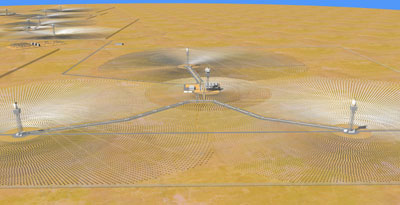
Image Credit: BrightSource Energy
Today, BrightSource Energy and PG&E signed an agreement for the utility to take delivery of and distribute 500MWe of electricity from 3 proposed solar thermal plants in California. Power delivery could begin as early as 2011 and when fully online, the project is anticipated to deliver up to 1.2GWh of power per year into the grid.
Options for 400MW more power exist in the contract and that could push generation to over 2GWh per year from the aggregated projects.
Comments are off for this post
Ausra’s Bold Claim
We’ve been tracking solar thermal for some time as it is intended to be part of our Sou Hills project in due course. One of the more interesting players to enter the fray is Ausra, an Australian company transplanted to the US and the recipient of substantial funding from Khosla Ventures. Recently, David Mills and Robert Morgan, principals in Ausra, published a paper in which the claim is made that solar thermal could account for the entire US energy supply. Here’s a link to their paper.
It’s not lost on most people that the Sun does not shine 24×7 and, in fact, that it doesn’t shine every day even in a desert environment. Thus the stunningly low capacity factors delivered by solar solutions, both thermal and PV. However, with the advent of storage (water, pumped water, capacitors, and molten salts) this is beginning to change somewhat. The thesis advanced by Mills and Morgan is that an oversized solar array matched with a huge storage system sufficient for 16 hours of operation would be able to produce at baseload levels.
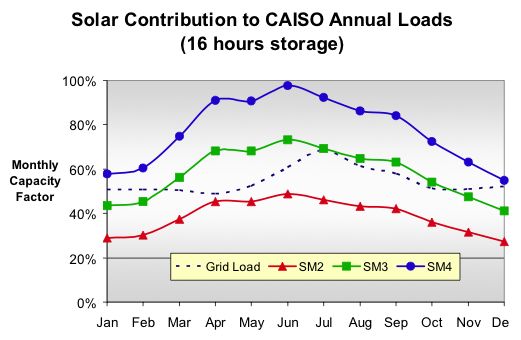
The “catch” to this whole approach is that to make the system work at baseload, a developer has the added cost of sizing the solar array 3x larger than normal and installing a huge storage system. Nevada Solar One is a 64MWe project that cost somewhere north of $250M in capital to complete. That’s around $3.9M/MWe at normal sizing. If we consider that the storage system is “free” and up the size 3x, that’s $750M+ capital cost to get 64MWe baseload generation, or $11.7M/MWe. To put this in perspective, a natural gas fired plant is on the order of $1M/MWe, clean coal is $3M/MWe, geothermal is $3M/MWe.
That’s not to say that the economics won’t change, as solar thermal becomes higher volume in production, the price should drop. If the price drops by 2/3, then there is an interesting discussion to be had, because sunshine is an underutilized resource. Also, we found the discussion about oil in the paper to be specious, less than 2% of the US energy load is generated with petroleum based products. If the authors wish to be taken seriously, they would address the technology vs. coal, nuclear, and natural gas generation as they are the top 3 producers of electricity in the US.
Nevertheless, it is an interesting assertion and it’s clear we can and should do more with solar thermal harvest than is happening today. Let’s hope Ausra and their cohorts can change the economic model to make this option viable.
2 comments
Infinia scores some Green
Stirling engine manufacturer Infinia closed a $50M series B investment with a veritable who’s who of funders including: Vinod Khosla’s Khosla Ventures, Bill Gross’ Idealab and Paul Allen’s Vulcan Capital. The firm intends to use the funding to accelerate the productization of their stirling engines attached to generators for use in large scale solar thermal installations.

So what is a stirling engine anyway? It’s a loose piston setup that works on temperature differential between the two sides of the piston. Just like a regular piston engine, that reciprocating stroke can be transformed into rotation with torque. The novel approach in this case is to concentrate the sun’s heat and use that to generate the heat differential required to make the engine run. These engines have been around since the early 1800’s when Robert Stirling advanced the concept. See the illustration to the right from the Infinia website.
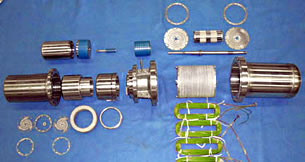
Each unit is rated at just over 3kw AC and are projected to list at around $20,000 per unit. It is believed that standard automotive parts manufacturing techniques can be used to fabricate the Infinia units. Operational costs associated with the units is believed to be low as stirling engines are low friction devices with relatively few moving parts and very loose tolerances used in design and assembly. As with all technologies, the cost should come down as the volume goes up.
Comments are off for this post
Solar Thermal Development Pipeline

Source: Emerging Energy Research
Emerging Energy Research released a report in November, 2007 detailing the state of the concentrated solar (or solar thermal) harvest development pipeline globally. This report is available for download at $3750 per copy. As you can see from the graph above there is a great deal of activity in the sector, though it’s backend loaded with respect to when the plants are due to come online. The other interesting aspect of this is the technology, parabolic trough is dominating, but linear fresnel and receiver type configurations are factoring into development to some extent. 1 comment
Multi-dimensional harvest in Panama
A colleague of ours has been exploring Panama recently and brought Rancho de Caldera to our attention. It’s a small resort set in the mountains of Panama with nine cabins and it’s largely energy independent. Despite being close to a volcano, geothermal systems are not part of the harvest system (even for heating/cooling), rather it is solar, wind, and micro hydro harvest backed by a battery bank and supplemented by a generator. The operator estimates that between 4.5 – 5 kW of electricity are generated per hour (1 kW from hydro/wind and the balance from solar.)
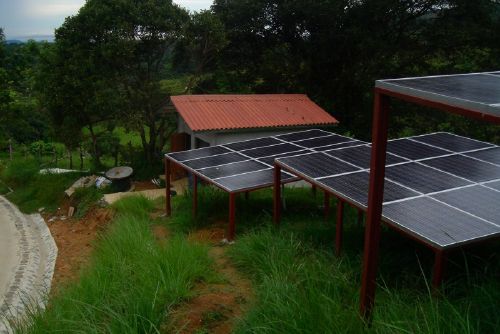
Photo Credit: Rancho de Caldera
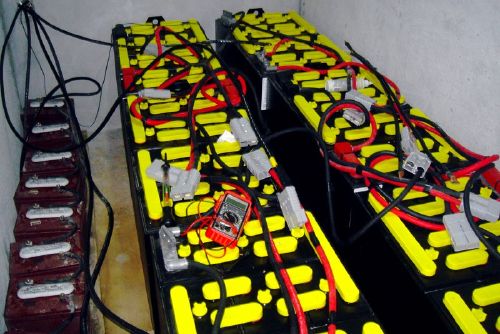
Photo Credit: Rancho de Caldera








